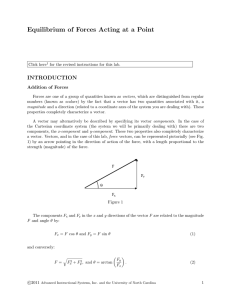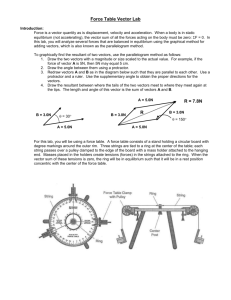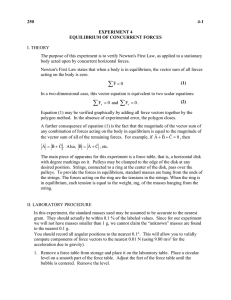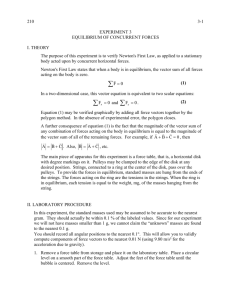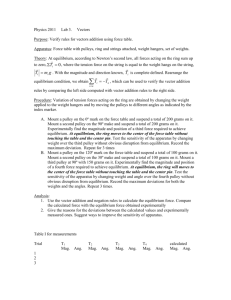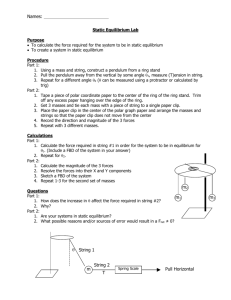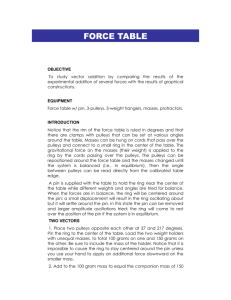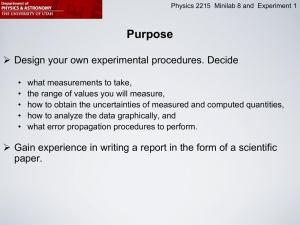Force Vectors
advertisement
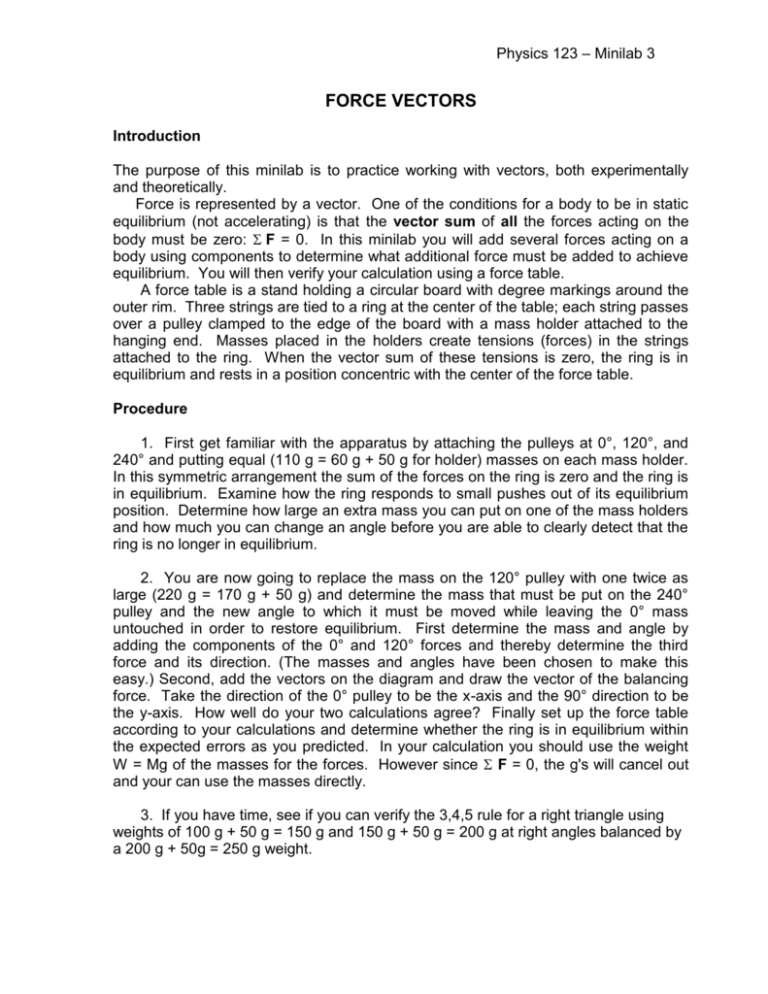
Physics 123 – Minilab 3 FORCE VECTORS Introduction The purpose of this minilab is to practice working with vectors, both experimentally and theoretically. Force is represented by a vector. One of the conditions for a body to be in static equilibrium (not accelerating) is that the vector sum of all the forces acting on the body must be zero: F = 0. In this minilab you will add several forces acting on a body using components to determine what additional force must be added to achieve equilibrium. You will then verify your calculation using a force table. A force table is a stand holding a circular board with degree markings around the outer rim. Three strings are tied to a ring at the center of the table; each string passes over a pulley clamped to the edge of the board with a mass holder attached to the hanging end. Masses placed in the holders create tensions (forces) in the strings attached to the ring. When the vector sum of these tensions is zero, the ring is in equilibrium and rests in a position concentric with the center of the force table. Procedure 1. First get familiar with the apparatus by attaching the pulleys at 0°, 120°, and 240° and putting equal (110 g = 60 g + 50 g for holder) masses on each mass holder. In this symmetric arrangement the sum of the forces on the ring is zero and the ring is in equilibrium. Examine how the ring responds to small pushes out of its equilibrium position. Determine how large an extra mass you can put on one of the mass holders and how much you can change an angle before you are able to clearly detect that the ring is no longer in equilibrium. 2. You are now going to replace the mass on the 120° pulley with one twice as large (220 g = 170 g + 50 g) and determine the mass that must be put on the 240° pulley and the new angle to which it must be moved while leaving the 0° mass untouched in order to restore equilibrium. First determine the mass and angle by adding the components of the 0° and 120° forces and thereby determine the third force and its direction. (The masses and angles have been chosen to make this easy.) Second, add the vectors on the diagram and draw the vector of the balancing force. Take the direction of the 0° pulley to be the x-axis and the 90° direction to be the y-axis. How well do your two calculations agree? Finally set up the force table according to your calculations and determine whether the ring is in equilibrium within the expected errors as you predicted. In your calculation you should use the weight W = Mg of the masses for the forces. However since F = 0, the g's will cancel out and your can use the masses directly. 3. If you have time, see if you can verify the 3,4,5 rule for a right triangle using weights of 100 g + 50 g = 150 g and 150 g + 50 g = 200 g at right angles balanced by a 200 g + 50g = 250 g weight. Physics 123 – Minilab 3 Physics 123 Names FORCE VECTORS ___________________________ 1. Error estimates: _____________________________ Mass_______________ 2. Solution: mass = angle = Minilab 3 Angle ____________ B (120 deg, 220 g) A (0 deg, 110 g) 3. Balance: angle = __________

